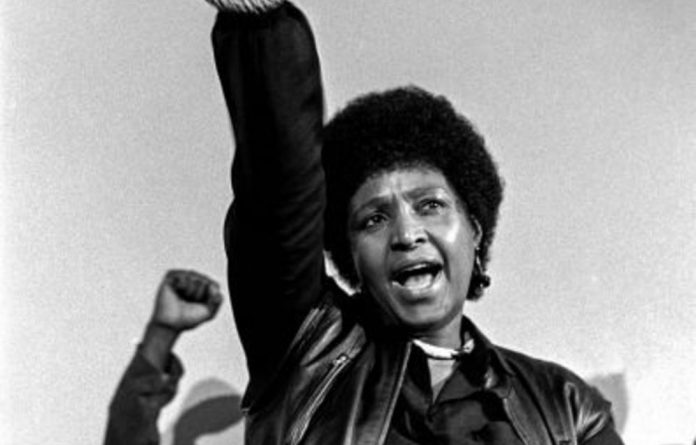Anti-Apartheid Activist Winnie Mandela’s life was one of endless trials, as an outspoken opponent of white supremacy and the second wife of Nelson Mandela.
The town of Brandfort in South Africa’s Free State province—where Winnie was banished for 8 years—announced a name change honoring the icon in early August.
Nomzamo Winifred Zanyiwe Madikizela was born in Pondoland, a region of South Africa in the Eastern Cape province. The loss of her mother Gertrude and older sister Vuyelwa at a young age left her faith in God shaken.
Winnie’s passion for politics and the dismantling of apartheid was inspired by two seminal events in her young life. The first occurred when Winnie and her father Columbus traveled to a celebration—to mark the end of World War II—and found the party allowed only white people. The second event transpired as Winnie and her father passed a white-owned shop, where inside a Black man and his family were accosted and subsequently kicked out by the white son of the shopkeeper.
While attending the Jan Hofmeyr School of Social Work, Winnie met rising anti-apartheid icon Nelson Mandela. In a deli in Johannesburg, the romance of 23-year-old Winnie and 40-year-old Nelson began, culminating in their marriage in 1958.

Key members of the African National Congress—chief among them Nelson Mandela—were sentenced to life in prison during the 1964 Rivonia trial for committing sabotage and other political acts in order to spark the anti-apartheid revolution.
Winnie and Nelson were physically separated for the bulk of their nearly 40-year marriage, with Nelson imprisoned.
Winnie was routinely subjected to police raids, banning orders and imprisonment for both her association to Nelson and her own political activism. During a particularly brutal 17-month imprisonment in 1969, Winnie was tortured in solitary confinement—deprived of sleep for five days.
She was banished to the now renamed town of Brandfort in 1977, where she flourished—despite intense police surveillance—and created a soup kitchen, daycare center and gardening group, among other efforts.
The era that would come to define Winnie’s political career began when she formed Mandela United Football Club, for marginalized youths to come together in social activities in the late 1980s. The youths served as her bodyguards and gained a “reputation for operating with impunity as a kind of vigilante mafia,” according to South African History Online.
The Sunday Star newspaper broke the now infamous 1989 scandal: the kidnapping and murder of Stompie Moeketsi. 14-year-old Stompie was brutally beaten by members of Winnie’s MUFC, under the suspicion that he was a police informant. Winnie called Dr. Abu Baker Asvat upon finding the boy beaten. Asvat, a potential witness, was soon found dead.

Fallout from the scandal was eclipsed by the release of Nelson Mandela from prison in 1990, with Winnie at his side.

With Nelson back in power, Winnie was appointed Deputy Minister of Arts and Culture, though the position was revoked due to fraud accusations less than a year later.
Following the Stompie trial in 1991, Winnie resigned from her political posts in parliament and the ANC. Her marriage with Nelson dissolved by 1996. Winnie gained and lost political positions several times throughout the remainder of her life, many due to scandal.
Nevertheless, Winnie remained a figure of mass appeal, who was beloved by her people and mourned upon her passing in 2018.

“It has never been about me the person. I have never regarded myself as an individual. I am just a part of this whole liberation mission,” said Winnie in a 2014 interview with SABC News.
.
Originally posted 2021-08-17 10:08:02.








